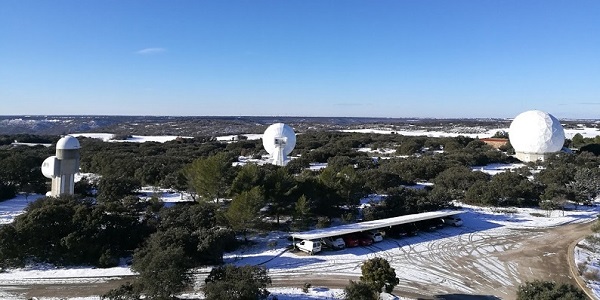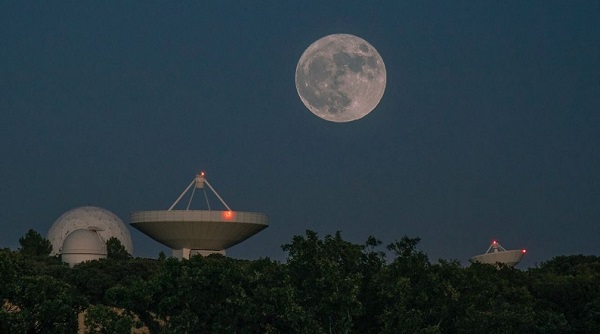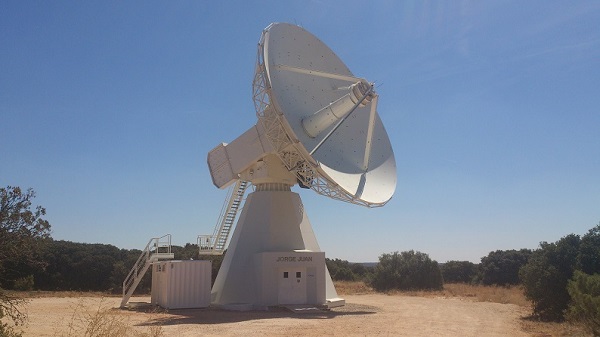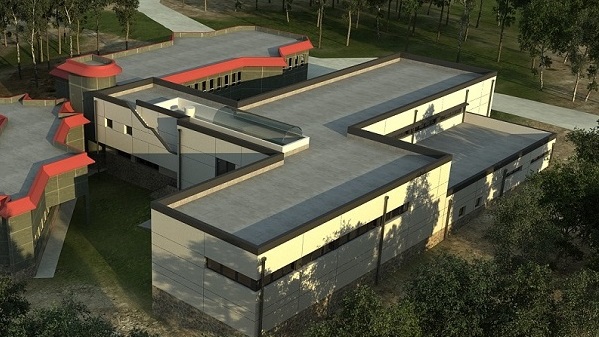YEBES CORE SITE
The Yebes Observatory is a technological development center of the National Geographic Institute of Spain, classified as ICTS (Infraestructuras Científicas y Técnicas Singulares).

Located 70 km northeast of Madrid, in the town of Yebes (Guadalajara), at an altitude of 980 meters above sea level, the Yebes Observatory houses two radio telescopes: one measuring 40 m and the other measuring 13.2 m, which are its main astronomical instruments.
The 40 m radio telescope was installed in 2008 and is currently dedicated both to exploring the VLBI (Very Long Baseline Interferometry) technique at millimeter and centimeter wavelengths, and to single-dish observations. The receivers cover the frequency spectrum between 2 and 120 GHz. The 40 m radio telescope is part of the EVN (European VLBI Network) and the IVS (International VLBI Service for Geodesy & Astrometry).

The 13.2 m RAEGE Yebes radio telescope, named “Jorge Juan”, is equipped with a VGOS broadband receiver and is used for geodetic observations. The radio telescope was integrated into the VGOS network in 2016. Construction of this RAEGE radio telescope began in late 2010, when the contract for the design, construction and commissioning of the first radio telescopes began. The radio telescope project was completed in the summer of 2011, and construction ended in 2013.

The Yebes Observatory also has two permanent GNSS stations – YEBE and YEB1, belonging to the Spanish National Geodetic Network of GNSS Reference Stations (ERGNSS). The YEBE Station has a Trimble Net R9 receiver and TRM29659 antenna and is also included in the EUREF Permanent GNSS network and the International GNSS Service (IGS) network. Station YEB1 has a Leica GRX1200 receiver and a LEIAR25 antenna.
In addition, Yebes has a gravimetry pavilion where an FG5 absolute gravimeter, an A10 gravimeter and a superconducting gravimeter are installed.
There are also electronics and electrochemistry laboratories where amplifiers and receivers are developed. Also part of the Observatory are a laboratory with an anechoic chamber for antenna measurement, and auxiliary buildings with generators, transformers and uninterruptible power supply systems. There is also an office building and a residence.
The Yebes Observatory is well equipped technologically and has a 10 Gb/s connection to the Spanish scientific network Red Iris-NOVA.
The Yebes Observatory also receives more than 6,000 visitors per year. To visit the Observatory, visit the website: http://astro.aytoyebes.es/
The activities for the construction of the 13.2 meter radio telescope were co-financed by FEDER/FEDER 2007-2013 within the scope of the project: “VGOSYEBES: Radiotelescopio de VLBI Geodesico y Astrometrico para su integracion en la red VGOS” with a budget of 4,250,000 €.
Currently, new activities are co-financed by FEDER/FEDER 2017-2020 within the scope of the project “YDALGO: Infrastructure development and laboratory activities for special geodesy in the Yebes Observatory”, with a budget of €9,490,000. They include the construction of an SLR Station and a new technological building fully equipped with radio frequency instrumentation and workshops.

The installation of a new generation SLR Station in 2023 transformed the Yebes Observatory into a Fundamental Geodetic Station, unique in Spain, fulfilling the requirements of the GGOS (Global Geodetic Observing System), relying on three space geodetic techniques: VLBI (VGOS), GNSS and SLR, as well as gravimetry (absolute and relative superconducting). The different techniques will be linked together by building a local-tie network. The Yebes Observatory aims to become one of the most important Core Sites in the world.
